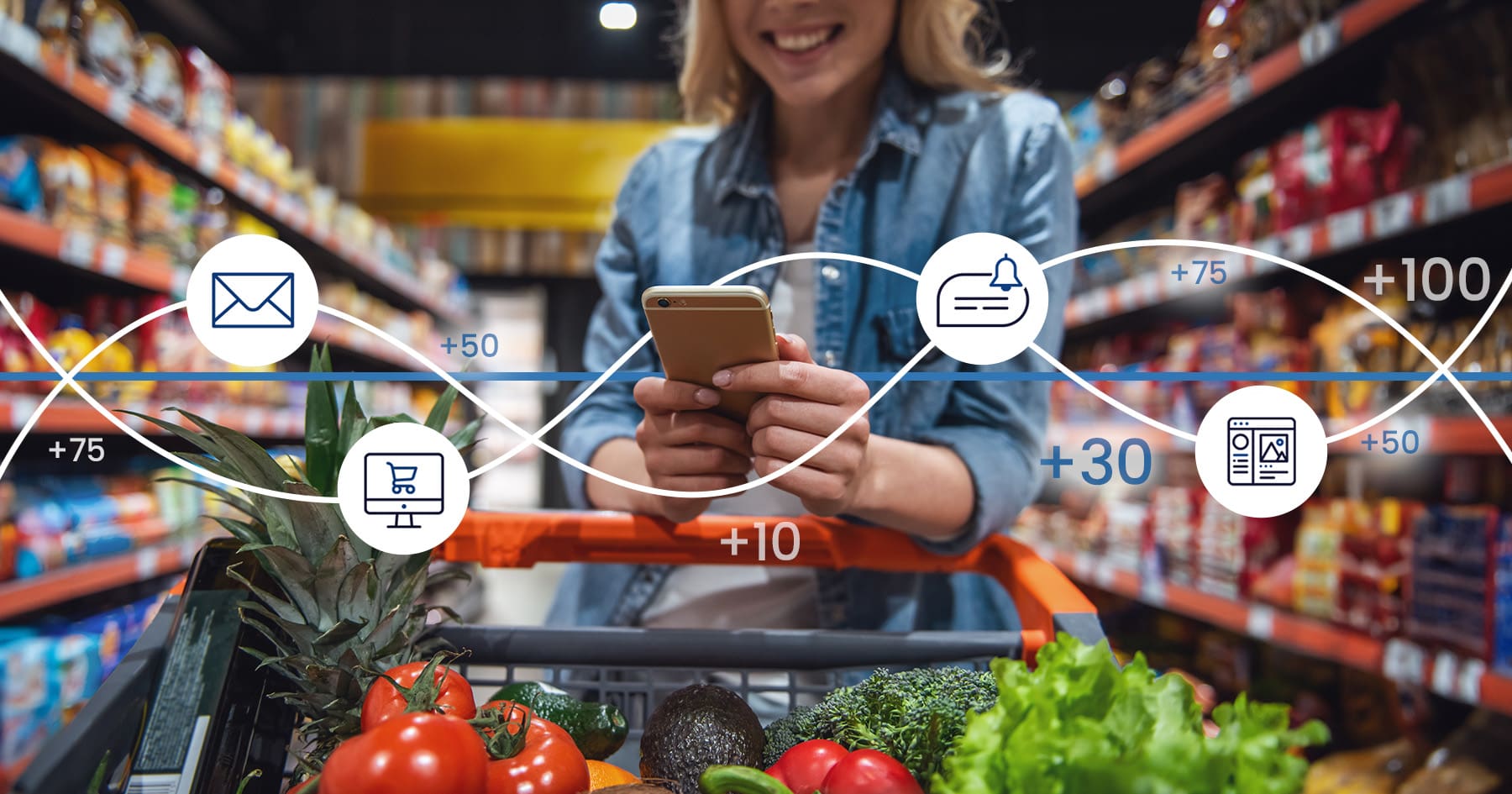oliday shopping is no longer limited to the weeks between Black Friday and Christmas. Amazon kicks things off with its October Prime events, while Walmart and Target have started promotions as early as September. This extended season means shoppers are inundated with promotions long before December, forcing brands to spread budgets across a longer marketing runway.
But here’s the reality check: Holiday sales growth this year is projected at just 1%, the slowest since 2009.
Translation? Retailers can no longer rely on the traditional holiday sales bump. Success this year will require sharper, more strategic, and more consumer-centric approaches.

According to eMarketer, winning the holiday retail game boils down to three core strategies:
Discounting isn't enough anymore. Today's buyers are smart; they want value that goes beyond the checkout and affects the brand long past the holiday window. The smartest retailers are finding ways to convert short-term discounting into long-term loyalty drivers.

Take Primary, for example. Instead of discounting prices with a severe 40% markdown for the holidays, they opted for a Black Friday promotion that gave shoppers free shipping for an entire year. This was not only more profitable with lesser costs to the brand, but it also formed a value exchange to encourage multiple purchases in the months to follow.
Sephora ties discounts directly into its Beauty Insider program, offering extra points on holiday purchases. The points act as an incentive for shoppers to come back and redeem the rewards later, creating new opportunities for repeat business.
Apple generally steers clear of discounts. Instead, they attach gift cards to purchases, forcing customers back into their ecosystem for apps, accessories, or future products.
Shoppers are deal-hungry, but what they crave more are exclusive perks that make them feel valued. Loyalty programs are no longer optional—they’re essential tools to drive frequency and higher basket sizes.

Look at Starbucks: Rather than slashing prices, Starbucks wins with seasonal experiences. Think limited-edition holiday cups, festive drinks, and app-exclusive challenges. These strategies drive urgency, repeat visits, and a stronger emotional bond.
Nike uses its member app to deliver early access to holiday product launches and exclusive bundles to drive loyalty and status.
For Ulta Beauty, this strategy consists of exclusive holiday features for its members, such as Black Friday early access and double rewards points, keeping their community feeling prioritized.
Other retailers are in the process of doing the same. Usually, early adoptions of limited-time deals are made available to Amazon Prime members, giving an aura of exclusivity designed to drive urgency and enrollments. Best Buy has launched such discounted prices on a few select tech products - exclusive to member-only pricing - intended as surprises for its loyal customers.
Nordstrom, on the other hand, quarry up its loyalty program to invite members to private shopping events and provide them first access to holiday sale: ingredient approach to create old inner-circle feel.
As one can tell from these, loyalty is no longer just points; the new currencies are experiences, exclusivity, and emotional connection. Making your loyal customers feel special will not just spark the fires of repetition during the holiday season but improve relationships that will carry through to next year and possibly beyond.
Holiday shopping is primarily done on phones and couches as opposed to in crowded malls. This year, over half of Prime Day sales were driven by mobile devices. So, brands need to ensure the journey from discovery to purchase is frictionless.

Target - Their app seamlessly allows customers to buy via online-order and in-store pick-up or through same-day delivery with Shipt. Moreover, checkout is done for speed and convenience so that no customer ever finds time to abandon their cart.
It all comes as a news flash: being "on mobile" is no longer just another channel-it is the very field of competition for shopping. To compete at this level, a brand must provide fast-loading pages, intuitive navigation, and seamless checkout. Even the smallest of inconveniences, such as too many fields per form or a sluggish page speed, convert instruction into loss when shoppers expect nothing less than speed and simplicity in this demanding season of heavy shopping.
In a sense, big brands seem to be better positioned for the act of going out. Their real power is having set the fundamentals at scale and in a consistent manner across every channel.

Coca-Cola is leaning deep into its bittersweet history of storytelling this holiday season. In addition to product promotions, they are discounting QR rebates, AI-generated holiday cards, and the nostalgia-infused return of the merry caravan tour. But that is not what these activations achieve. It is about instilling cultural moments in the minds of consumers.
Coca-Cola knows that whenever people associate a brand with feelings of happiness, nostalgia, and coming together, it increases its chances of being chosen long after the holiday campaigns are over.
Costco often praised for value throughout the world—has perfected what is often commonly known as the Costco Effect. The shoppers come in for basic necessities, but the treasure hunt atmosphere and seasonal product curation often lead them to happily stroll down the impulse aisles for gifts, high-end stuff, and holiday presents.
Further fueling this future impulse buy is the understanding that their samplings are just a little bit festive, nudging consumers to try and buy more things. Costco is inclined to drive higher basket sizes and home joy without coming across too aggressively with discounts, blending perceived savings and the joy of discovery.
The thread that runs through all of this? These brands aren't simply marketing products, they articulate feelings, trust, and memorable experiences. By being proficient in the fundamentals of convenience, loyalty, and emotional resonance, these brands stretch the intangible nature of holiday campaigns into long-term brand equity.
The good news? You don’t need a Coca-Cola or Costco budget to compete. Smaller brands can replicate these strategies by leaning into authenticity and smart execution:
A small DTC skincare brand needs to bundle bestsellers with a free travel-size gift; promote TikTok creators, and do a lot more app-exclusive early access, all at checkout with just two taps away. It should also employ limited-edition holiday packing to engender urgency and collectibility, giftifying and all the more uppity for exclusiveness.
Build up the loyalty tier system-double points on purchases made during holidays; early access to VIP customers, which would entice repeat engagement beyond December.
The retail game during the holiday season is no longer about screaming discounts and looking forward to quick sales spikes. It is weaving together value, loyalty, mobile-first convenience, and emotional connection into a coherent kind of story that drives short-term conversions and long-term relationships.
True, the big ones may have a bigger budget, but with creativity, authenticity, and strategic execution, any brand can compete this holiday season and even punch far above its weight. The key is not how much you spend but how meaningfully you connect with your audience.
It's time to rethink your holiday strategy. Lead with value, reward loyalty, optimize for mobile, and tell a story that resonates, and you'll not only drive sales this season but also build relationships that last well into the new year.